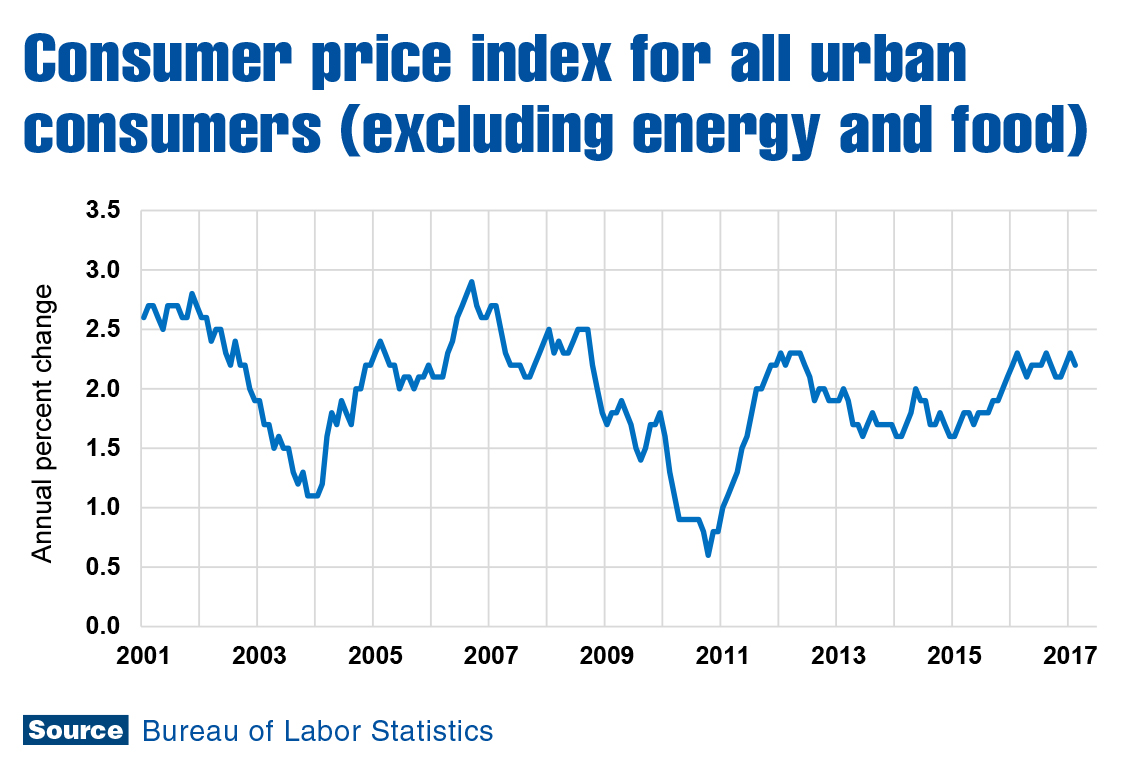By Steve Latin-Kasper, NTEA Director of Market Data & Research
This article was published in the May 2017 edition of NTEA News.
According to Bureau of Labor Statistics (BLS), the consumer
price index (CPI) for all urban consumers (excluding energy and food) increased
2.2 percent in February 2017 as compared to the same month the previous year.
This aligns with the 2.3-percent forecast for 2017 in the latest Outlook
published by National Association for Business Economics (NABE).

However, there is reason to believe the inflation forecast
may be too low. BLS data for total private sector average hourly earnings indicates
wages increased 2.8 percent in February. The growth rate of average hourly
earnings began accelerating steadily in the first quarter of 2015, and it’s not
a coincidence the inflation rate started gaining momentum in the same
timeframe. The latest NABE forecast indicates average hourly earnings will
likely rise 3.2 percent this year. If wage and income levels keep growing
faster, inflation will probably follow suit.
As of the first quarter, producer prices (price of goods
when one firm buys from another) are increasing even faster than consumer goods.
Producer prices were up 4 percent in February 2017 as compared to the same
month the previous year. The average price increase for steel mill products was
15.1 percent.
In any business cycle, there are periods when prices change
more than others. As companies react to the changes, communications up and down
the supply chain can become difficult. One way to avoid those challenges is to
take advantage of price indexes published monthly by BLS.
Organizations do so by including price escalators in contracts — especially
long-term ones.
Escalators have been part of business-to-business contracts
for a long time. In fact, a primary reason BLS publishes price indexes is for
escalator use. Utilizing price indexes as contract escalators is not just
relevant to certain business types. All companies buy things and, therefore,
can benefit from contract escalators.
The price index type you select is important. A producer
price index (PPI) exposes both parties in a contract to more volatility than
going with a CPI. However, for contracts involving a bill of materials with a
total cost substantially accounted for by one product (such as aluminum sheet
or steel plate), availability of those commodity price indexes offers a risk
elimination opportunity which should be carefully considered. Keep in mind that
escalators work in both directions.
For contracts with bills of materials including many items
(none of which account for a large percentage of total cost), using a CPI or
employment cost index may be a better option. Companies can use a PPI for their
own products — if existing.
While BLS is a good source for price information, other
options are available. For example, some businesses depend on their steel suppliers
to provide steel price details. Others pay for database subscriptions from
market research companies. However, if BLS publishes a price index useful to
your organization, you can download the file free of charge. BLS explains the
entire process of using price indexes as contract escalators at bls.gov/ppi/ppiescalation.htm.
